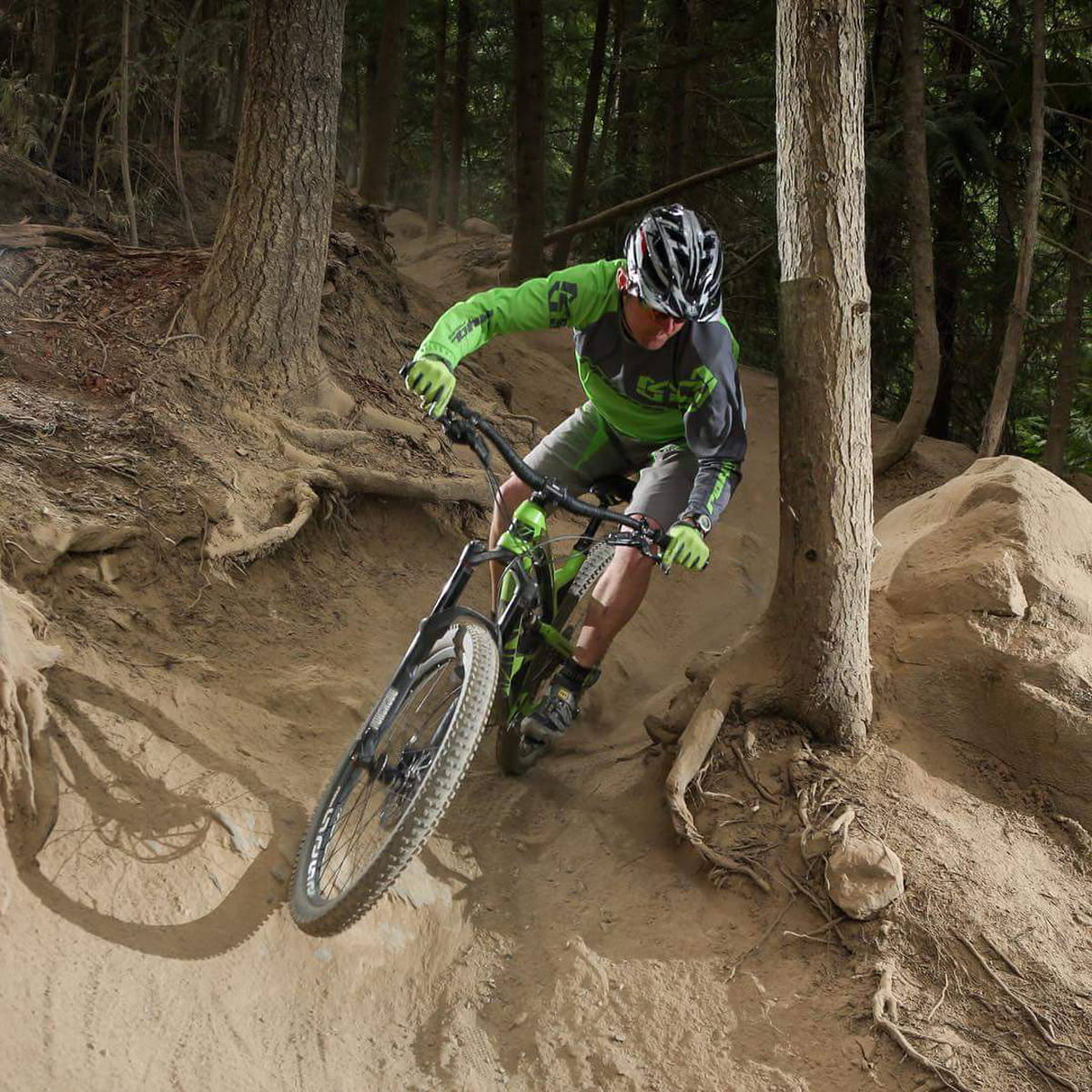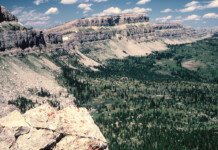By Gene Hamilton — Here in the Mountain West, we have amazing sunny weather that leaves our trails hardpacked with a thin layer of sand on top. We aren’t exactly blessed with the tacky, loamy dirt of the PNW. This lack of traction limits your control, speed, and confidence.
The main things you need traction for while descending are braking, cornering, and slippery surfaces (off-camber, wet roots, ice, mud, gravel, etc.).
When climbing you need traction for power production and to get through roots, rocks, technical sections, and steering.
Here are the proper strategies to minimize the effect of slippery conditions:
I originally got this idea from motorcycle coach Keith Code and then one of my students taught me a better way of explaining it. Keith Code uses dollars, my student’s motorcycle coach used units of 100. So, at any given moment, your tires have 100 units of traction to use as you are riding. If you exceed 100 units, your tires will slide and you will likely crash or at least get a good scare.

Strategy 1:
Learn to be aware of how many units you are currently using and/or how many units you are about to need. If you exceed 100 units bad things are going to happen!
If it feels like you are using 100 units of traction to get across that off-camber section of trail you have no units left to slow down with. Therefore, if you brake on that off-camber you will probably slide out and crash.
Strategy 2:
“DON’T brake on off-camber!” Greg Minnaar yelled during one of my courses with him years ago. He is right, brake BEFORE the off-camber and/or after the off-camber. When you brake on off-camber you are rolling the dice. The steeper, looser or more slippery the off-camber is more traction is required to ride it. Do you have enough traction? Or will your tires seek the path of least resistance and slide down the off-camber?
You need all 100 units of traction for most corners (if you’re not using approximately 100% you could be cornering faster and more efficiently). Therefore, if you brake hard in that corner you will probably slide out and crash.
Strategy 3:
Brake to slow down before corners. (Once you have cut your speed, dragging your rear brake gently so you don’t accelerate is okay). Do not try to cut speed and change direction at the same time, this is a recipe for disaster as you will overload your tires.
Watch Greg Minnaar or Mitch Ropelato, they do this so well they often look slow as they have slowed a hair more than their competitors at the entrance of the corner. Then they carve their turns and generate exit speed. Sliding may look cool but when your tires are sliding you are scrubbing speed, not accelerating.
Strategy 4:
Brake where you have the most traction. If the last 15 feet of the trail leading into the corner is loose or brake bumped, do most of your cutting of speed before the loose or brake bumped section. If the centre of the trail is loose or brake bumped do your braking on the outside edge of the trail.
You need a lot of traction when climbing, especially when doing “up and over” manoeuvres and when it is loose and steep. This is where weight placement is critical as well as power management. When the trail gets loose and/or technical how you use your 100 units of traction is very important.
If you put too much power into your pedals as you go over that wet root you will spin out (as you needed 180 units of traction to power over that root). Sometimes a soft pedal accomplishes more. Learn to manage your power output.
Strategy 5:
Manage your weight placement and power output when climbing technical climbs.
When climbing you have two goals regarding traction, keep enough weight on your rear wheel so you can apply power without spinning out while also keeping enough weight on the front wheel so it doesn’t come off the ground. You do this by sliding forward and back on your saddle and by hinging forward lowering your chest towards the bars.
If you slide and/or hinge a little too far forward your rear tire will spin out on the climb (your front tire may have had 60 units of traction while your rear tire needed 65 units). If you don’t slide and/or hinge enough your front wheel pops up and you loop out.
The timing of your power output is extremely important too. There is a slow, steep up and over rock move on Amasa Back trail in Moab that requires all of my power and I need as much traction as I can get to not spin my rear tire.
After wheelieing my front wheel halfway up the rock there is a “dead space” as I shift my weight up and forward before my rear wheel gets traction. First, my rear tire has to contact the rock, then, after contacting the rock which compresses my rear suspension, my suspension rebounds, unweighting the rear wheel for a millisecond. So I pause my pedal stroke until my rear wheel is planted before applying power.
When I am in a hurry or thinking about the timing of my power output, I usually don’t make this rock move. When I am in my groove and relaxed it’s actually easy! The timing is so quick you must do it by feel, you can’t think about it. This takes practice!
Going up and over a wet root is similar. Often I need power the whole way, but I can’t power the rear wheel over the root (as I need about 600 units of traction to do that!). In this situation, I stomp on the pedal as I wheelie to give me a little more momentum. Then I back off to 50% power as my wheel is in contact with the wet root and as I feel the rear wheel crest the root I’m back to 100% power.
This is why I love mountain biking these subtle applications of skills challenge me and keep me in the zone.







